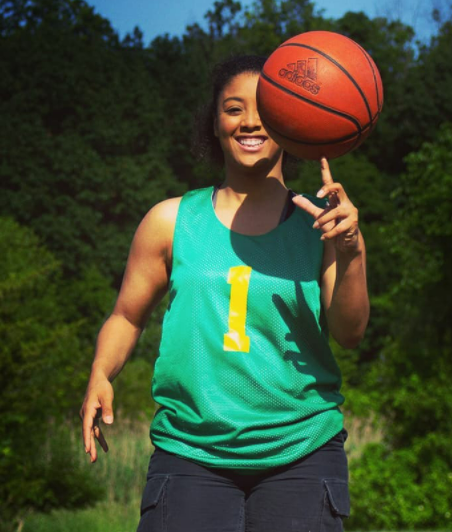March Madness Investing Lessons
- Ryan A. Dunn, CFP®

- Mar 30, 2022
- 4 min read
Updated: Jun 13, 2022

Key Takeaways
As with investing, past performance does not guarantee future success in the NCAA basketball tournament.
Don’t succumb to recency bias, familiarity bias, or emotion when investing or filling out your brackets.
There’s no such thing as a “sure thing” in the markets or tournament brackets. Don’t blindly follow the so-called “experts” on TV.
Even if you don’t know the difference between a jump shot and a jumpsuit, it’s hard to ignore the annual NCAA men’s basketball tournament, a.k.a. March Madness. It’s on TV round the clock from St. Patrick’s Day through early April and office productivity drops for three weeks as people who don’t follow college basketball all year long are frantically checking their “brackets” every time there’s a score alert.
Last year I did very well in our office pool. This year I’m taking my lumps. But I still find the tournament fascinating because the mistakes people make filling out their brackets are so similar to the mistakes they make with investing. Here are some of the most obvious:

1. There’s no such thing as a sure thing. In the very first round, #2 seed Kentucky (enrollment 31,000) lost to #15 seed St. Peters of Jersey City, NJ (enrollment 2,500) despite Kentucky being a nearly 20-point favorite. Only 3% of people nationwide picked St. Peter’s to beat Kentucky in their brackets and I’ll bet most of them were from North Jersey. 2. The experts really aren’t. The expert analysts on TV don’t do any better picking winners than “Jane” down the hall who just picks teams based on whose mascot sounds tougher, i.e., a peacock or a wildcat? Chief “Bracketologist,” ESPN’s Joe Lunardi, not only had Kentucky winning that infamous game against St. Peters, but also had the Wildcats advancing to the Final Four. He also had #2 Auburn defeating #10 Miami in the second round. And then there’s the West region. He had #10 Davidson defeating #2 Duke in the second round, Alabama defeating Notre Dame, and Boise State over Memphis. Oops. Those were just his early-round stumbles – in one of the four regions of the country. And he gets paid a ton for being right, just like Wall Street fund managers and stock analysts.
Our firm’s marketing director, Candace Henry, is in second place in our office pool. While she’s athletic, she bases her March Madness picks solely on which team’s city is known for having better cuisine. She expected Tennessee (Knoxville, TN) to beat Michigan (Ann Arbor, MI) because she believes Tennessee has better cuisine. So far, she’s doing better than ESPN’s Lunardi. But is that strategy persistent?
3. Falling for unrelated correlation. What Jane and Candace are doing is exploiting a “false positive” in which bettors/investors believe there is a positive correlation between two seemingly unrelated events. Does a city’s cuisine or a team’s mascot, really influence the outcome of a game played by highly trained quasi-professional athletes? No. One did not cause the other.

Still, those false positives can be enticing. Take the Super Bowl. Oddsmakers found that in years in which the final combined score of the Super Bowl was higher than 45 points, the stock market returned 15.9% on average. In years when the combined score was lower than 45, the market returned only 8.2%. The same goes for the so-called "Super Bowl Halo Effect."
Did you know that 80% of the time, the Dow Jones industrial average will be positive over the course of the full year when a team from the National Football Conference wins the big game and negative for the year when an American Conference team wins? The only problem with betting on false positives is that when they’re wrong, they can be WAY wrong, just as with investing. Back to Jane’s mascot toughness theory. She took a big hit to her brackets when the aforementioned St. Peters (Peacocks) took down the might Kentucky (Wildcats). She’ll recover from a busted bracket. Suppose that had been her retirement account?
4. A winning formula is not persistent. Just like no stock (or fund) continues to top the charts year after year, there has not been a repeat winner of the NCAA basketball tournament in 15 years (Florida 2006-07). Since the NCAA Men’s Basketball Tournament debuted in 1939, only six programs have won consecutive national championships. You have to go back to 1991-92 (Duke) and then to the UCLA juggernaut of the late 1960s and early 1970s to see back-to-back championships. As mentioned earlier, I won our office pool last year. This year, using the same strategy – not so well. It reminds me of the famous Callan chart showing the best performing asset classes year after year. Going back to 2001, no single asset class has topped the chart in consecutive years this century.

5. Not diversifying enough. While playing the ‘large cap’ favorites will keep you near the top of your office pool, you have to take some risks to win your pool. My coworker, Brenden, is doing very well this year. He was in the 99th percentile nationwide after the first two rounds of the tournament even though he had only 11 of the Sweet 16 teams remaining. The key is he correctly selected several ‘small cap’ upstarts to defeat the ‘large cap’ favorites in the early rounds. Those early bonus points for picking upsets will carry him far even if a few of his big names stumble in the later rounds. The same goes for the financial markets.
Conclusion Simple as it seems, the odds of picking all 67 tournament games correctly is about 120 billion-to-one according to the NCAA. You’d have better odds of winning the Powerball Jackpot. Still, people never stop trying because everyone has a “system” and it’s easy to see who the best companies/teams are. Stick to some of the rules above and you’ll have a good chance of making it far in your bracket. Good luck this year!
RYAN A. DUNN, CFP®, Wealth Manager at Novi Wealth








